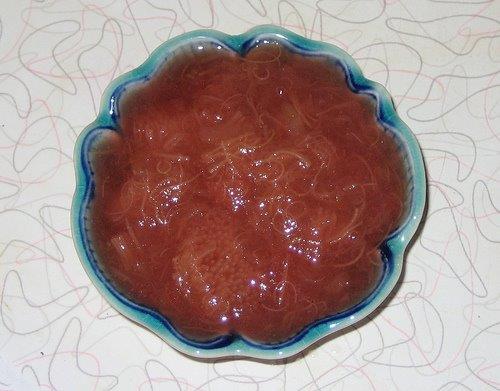|




|
Monitoring the Crop
Being a fourth generation farmer, growing vegetables is in my blood and finding the most productive and healthy way to grow rhubarb is my goal.
Even though we are not an organic farm, many of the principles are employed to obtain a quality product and leave the soil in a condition at the end of each crop that I am proud of.
A block of rhubarb is usually grown for 5 years before it is dug up and a new block is planted with the divided crowns. What gets me excited, is as the crowns are dug up you see the
evidence of the earthworm population sometimes with up to 10-20 earthworms per square metre on the surface of the soil. This is quite often non-existent in many horticultural operations
due to the amount of chemicals (eg Herbicides) applied to the soil for weed control. Here at Macbeth farms we do not rely on herbicides for our weed control, but the strategic use of organic
and inorganic mulches allows us to grow a crop quite successfully with only minor hand weeding needed.
Biological additives including microbes are added to the soil throughout the life of the crop to offset the non–organic inputs that we apply. A healthy soil gives a healthy plant.
And as they say the proof is in the pudding. The crops are monitored on a regular basis for insects and assessed whether there are sufficient numbers of predatory insects (my mates) to control
the pests without the use of chemical controls. Chemicals are used only if there is no other viable control method.
Even when chemicals are used, the little frogs that come into the packing shed amongst the stalks (via a short winter excursion courtesy of the cold room) are promptly retuned to the field.
It is said that frogs are an indicator of a healthy eco system so I know what I use is safe and effective.
People comment on how quickly our rhubarb cooks up. When recipes say cook for 15- 20 minutes ours is done in 5-10 minutes because it is grown with care not letting the plants suffer or stress
which means the moisture content in our stalks is high. Our harvesting methods also help to maintain a premium product with the stalks being harvested in the early hours of the morning
(before some people even get out of bed) and then going straight into the cold room to cool down to 4 degrees celcius before being packed and then being returned to the cold room immediately after packing to
await transport to market via refrigerated transport. Our product lasts because the cool chain is maintained from paddock to market.
Rhubarb has a sugar content of 1.1g /100g according to the USDA (United States Department of Agriculture National Nutrient Data Base), but the sugar content of our rhubarb, consistently measures between
3.5g-4g/ 100g, which means less sugar needs to be added for the rhubarb to be enjoyed in your dishes.
|







